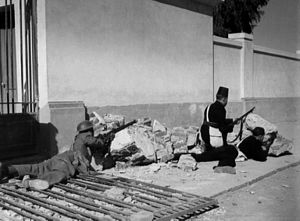
Ismailia is a city in north-eastern Egypt. Situated on the west bank of the Suez Canal, it is the capital of the Ismailia Governorate. The city had an estimated population of about 430,000 in 2021. It is located approximately halfway between Port Said to the north and Suez to the south. The Canal widens at that point to include Lake Timsah, one of the Bitter Lakes linked by the Canal.
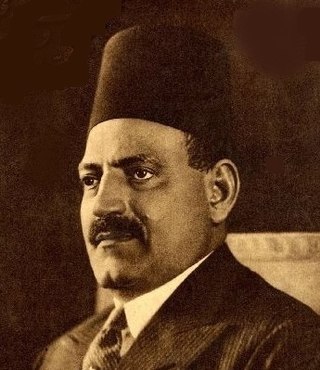
Mostafa el-Nahas Pasha or Mostafa Nahas was an Egyptian politician who served as the Prime Minister for five terms.
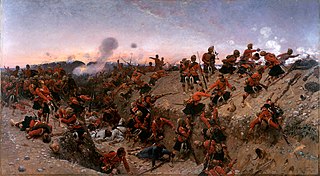
The Battle of Tel El Kebir was fought on 13 September 1882 at Tell El Kebir in Egypt, 110 km north-north-east of Cairo. An entrenched Egyptian force under the command of Ahmed ʻUrabi was defeated by a British army led by Garnet Wolseley, in a sudden assault preceded by a march under cover of darkness. The battle was the decisive engagement of the Anglo-Egyptian War.

The British conquest of Egypt (1882), also known as the Anglo-Egyptian War, occurred in 1882 between Egyptian and Sudanese forces under Ahmed ‘Urabi and the United Kingdom. It ended a nationalist uprising against the Khedive Tewfik Pasha. It established firm British influence over Egypt at the expense of the Egyptians, the French, and the Ottoman Empire, whose already weak authority became nominal.
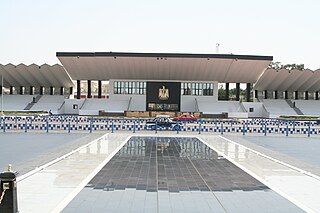
Terrorism in Egypt in the 20th and 21st centuries has targeted the Egyptian government officials, Egyptian police and Egyptian army members, tourists, Sufi Mosques and the Christian minority. Many attacks have been linked to Islamic extremism, and terrorism increased in the 1990s when the Islamist movement al-Gama'a al-Islamiyya targeted high-level political leaders and killed hundreds – including civilians – in its pursuit of implementing traditional Sharia law in Egypt.

The Kingdom of Egypt was the legal form of the Egyptian state during the latter period of the Muhammad Ali dynasty's reign, from the United Kingdom's recognition of Egyptian independence in 1922 until the abolition of the monarchy of Egypt and Sudan in 1953 following the Egyptian Revolution of 1952. Until the Anglo-Egyptian treaty of 1936, the Kingdom was only nominally independent, as the United Kingdom retained control of foreign relations, communications, the military, and Sudan. Officially, Sudan was governed as a condominium of the two states; however, in reality, true power in Sudan lay with the United Kingdom. Between 1936 and 1952, the United Kingdom continued to maintain its military presence, and its political advisers, at a reduced level, which resulted in the increase of Egyptian sovereignty and independence.
Events in the year 1956 in Israel.
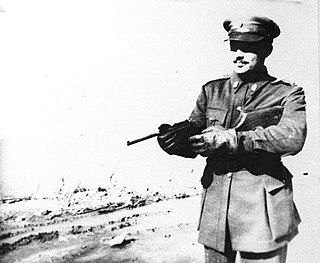
National Police Day is a national holiday in Egypt that occurs each year on 25 January.

The Cairo fire, also known as Black Saturday, was a series of riots that took place on 26 January 1952, marked by the burning and looting of some 750 buildings—retail shops, cafes, cinemas, hotels, restaurants, theatres, nightclubs, and the city's Casino Opera —in downtown Cairo. The direct trigger of the riots was the Battle of Ismailia, an attack on an Egyptian police installation in Ismaïlia by British forces on 25 January, in which roughly 50 auxiliary policemen were killed.

Egypt–Palestine relations are the bilateral relations between the Arab Republic of Egypt and the State of Palestine. Egyptian President Gamal Abdel Nasser was a strong supporter of the Palestinian cause and he favored self-determination for the Palestinians. Although the Egyptian government has maintained a good relationship with Israel since the Camp David Accords, most Egyptians strongly resent Israel, and disapprove of the close relationship between the Israeli and Egyptian governments.

The Battle of Ismailia took place between the Egyptian Army and the Israeli Defense Forces (IDF) during the last stages of the Yom Kippur War during October 18–22, 1973, south of the city of Ismailia, on the west bank of the Suez Canal in Egypt. The battle itself took place as part of the larger IDF-launched Operation Abiray-Lev, in an attempt to seize Ismailia and thereby sever the logistical and supply lines of most of Egypt's Second Field Army across the Suez Canal.

The Sinai insurgency was an insurgency in the Sinai Peninsula of Egypt, launched by Islamist militants against Egyptian security forces, which have also included attacks on civilians. The insurgency began during the Egyptian Crisis, during which the longtime Egyptian president Hosni Mubarak was overthrown in the 2011 Egyptian revolution.

The 2012–2013 Egyptian protests were part of the crisis in Egypt including the June 2013 protests, the July 2013 coup d'état, and part of the post-coup unrest. They saw varying opposition against three contiguous heads of state; namely, the Supreme Council of the Armed Forces (SCAF), Muslim Brotherhood, and the de facto ruling Egyptian Armed Forces.

Protests against the 2013 Egyptian coup d'état erupted in July 2013. Immediately following the removal of President Mohamed Morsi by the Egyptian Armed Forces on 3 July 2013 amid demonstrations against Morsi's rule, many protesters amassed near the Rabia Al-Adawiya Mosque to call for Morsi's return to power and condemn the military, while others demonstrated in support of the military and interim government. Deadly clashes such as Rabaa massacre continued for several days, with three particularly bloody incidents being described by officials as "massacres" perpetrated by security forces. During the month of Ramadan, prime minister Hazem al-Beblawy threatened to disperse the ongoing Pro-Morsi sit-ins in Rabaa al-Adaweya square and al-Nahda square. The government crackdown of these protests occurred in a violent dispersal on 14 August 2013. In mid-August, the violence directed by the army towards the protesters escalated, with hundreds killed, and the government declaring a month-long nighttime curfew.
The raid on Kerdasa took place on September 19, 2013, in Kerdasa when Egyptian security forces stormed the town to cleanse it from alleged terrorist spots. The operation was in response to an earlier massacre on August 14 the same year, where protesters attacked a police station killing eleven security personnel shortly after the Egyptian security forces had launched a violent crackdown and massacre on two protest camps in Cairo where hundreds of supporters of ousted Egyptian president Mohamed Morsi were killed. The raid came a few days after a similar operation in Minya's town of Dalga, and was part of a larger crackdown by the interim government on armed supporters of deposed President Mohamed Morsi.
Soldiers of Egypt or Ajnad Misr was a Salafist Islamist militant group that has been operating near Cairo, Egypt. The group was founded by Humam Muhammed in 2013, after he split away from the Ansar Bait al-Maqdis militant group. The group claims that its attacks are "retribution" for the August 2013 Rabaa Massacre; notably, the group targets only security forces. It has warned civilians of the presence of bombs that it has placed.
The following is a chronological timeline of fatal incidents during the ongoing Sinai insurgency, which was invigorated by a period of relative instability and political turmoil in Egypt, beginning with the 2011 uprising against former autocrat Hosni Mubarak. Insurgent attacks, however, intensified significantly following the July 2013 coup that ousted Muslim Brotherhood-backed president Mohamed Morsi and subsequent crackdown on his supporters.
On 1 July 2015, the IS-affiliated Sinai Province militant group launched the largest scale battle the Sinai Peninsula has seen since the 1973 Yom Kippur War, killing 21 soldiers in the numerous attacks which targeted multiple Egyptian army checkpoints and the Sheikh Zuweid police station in the Sinai Peninsula. More than 100 militants were reportedly killed by the army during the battle.

The Islamic State – Sinai Province was a branch of the terrorist Islamist group Islamic State that was active in the Sinai Peninsula of Egypt.

In July 2013, at the same time as mass protests began against the 3 July coup d'état which deposed Mohamed Morsi, and in parallel with the escalation of the already ongoing jihadist insurgency in the Sinai Peninsula, pro-Muslim Brotherhood militants started violent attacks against policemen and soldiers in central and western Egypt. In the following months, new Islamist armed groups were created to reinstate Islamist rule in Egypt, like Soldiers of Egypt and the Popular Resistance Movement. Since 2013, violence in mainland Egypt has escalated and developed into a low-level Islamist insurgency against the Egyptian government.
